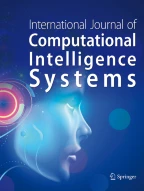Abstract
The concern over security in all fields has intensified over the years. The prefatory phase of providing security begins with authentication to provide access. In many scenarios, this authentication is provided by biometric systems. Moreover, the threat of pandemic has made the people to think of hygienic systems which are noninvasive. Iris image recognition is one such noninvasive biometric system that can provide automated authentication. Self-organizing map is an artificial neural network which helps in iris image recognition. This network has the ability to learn the input features and perform classification. However, from the literature it is observed that the performance of this classifier has scope for refinement to yield better classification. In this paper, heterogeneous methods are adapted to improve the performance of the classifier for iris image recognition. The heterogeneous methods involve the application of Gravity Search Optimization, Teacher Learning Based Optimization, Whale Optimization and Gray Wolf Optimization in the training process of the self-organizing map classifier. This method was tested on iris images from IIT-Delhi database. The results of the experiment show that the proposed method performs better.
Article PDF
Explore related subjects
Discover the latest articles, news and stories from top researchers in related subjects.Avoid common mistakes on your manuscript.
References
P.L. Kaufman, A. Alm, F.H. Adler, Adler’s Physiology of the Eye: Clinical Application, Mosby, St. Louis, MO, USA, 2003.
FH. Adler, Ocular Signs in Slit-Lamp Microscopy. Arch Ophthalmol, 6 (1949), 859.
L. Flom, A. Safir, Iris Recognition System Patent No. 4641349, 1987. https://patents.google.com/patent/US4641349A/en
J.G. Daugman, High confidence visual recognition of persons by a test of statistical independence, IEEE Trans. Pattern Anal. Mach. Intell. 15 (1993), 1148–1161.
Y. Hu, K. Sirlantzis, G. Howells, Optimal generation of iris codes of iris recognition, IEEE Trans. Inf. Forensics Secur. 12 (2017), 157–171.
D. Sadhya, K. De, B. Raman, P.P. Roy, Efficient extraction of bit locations and binarized iris features, Expert Syst. Appl. 140 (2020), 112884.
C. Galdi, J.-L. Dugelay, FIRE: fast iris recognition on mobile phones by combining colour and texture features, Pattern Recognit. Lett. 91 (2017), 44–51.
J. Chen, F. Shen, D.Z. Chen, P.J. Flynn, Iris recognition based on human-interpretable features, IEEE Trans. Inf. Forensics Secur. 11 (2015), 1476–1485.
B. Sahu, P.K. Sa, S. Bakshi, A.K. Sangaiah, Reducing dense local feature key-points for faster iris recognition, Comput. Electr. Eng. 70 (2018), 939–949.
Z. Sun, H. Zhang, T. Tan, J. Wang, Iris image classification based on hierarchical visual codebook, IEEE Trans. Pattern Anal. Mach. Intell. 36 (2013), 1120–1133.
N. Aginako, G. Echegaray, J.M. Martinez-Otzeta, I. Rodriguez, Iris matching by means of machine learning paradigms: a new approach to dissimilarity computation, Pattern Recognit. Lett. 91 (2017), 60–64.
K. Wang, A. Kumar, Cross-spectral iris recognition using CNN and supervised discrete hashing, Pattern Recognit. 86 (2019), 85–98.
B. Fang, Y. Lu, Z. Zhou, Z. Li, Y. Yan, L. Yang, G. Jiao, G. Li, Classification of genetically identical left and right irises using a convolutional neural network, Electronics. 8 (2019), 1109.
Iris Recognition, NEC buys into Tascent to focus on iris recognition, Biometric Technol. 8(2018), 1.
R. Rakvic, R. Broussard, A.H. Ngo, Energy efficient iris recognition with graphics processing units, IEEE Access. 4 (2016), 2831–2839.
J. Tapia, C. Aravena, Gender classification from NIR iris images using deep learning, in: B. Bhanu, A. Kumar (Eds.), Deep Learning for Biometrics, Advances in Computer Vision and Pattern Recognition, Springer, Cham, Switzerland, 2014, pp. 219–239.
K. Nguyen, C. Fookes, A. Ross, S. Sridharan, Iris recognition with off-the-shelf CNN features: a deep learning perspective, IEEE Access. 6 (2017), 18848–18855.
R.M. Farouk, R. Kumar, K.A. Riad, Iris matching using multidimensional artificial neural network, IET Comput. Vis. 5 (2010), 178–184.
W. Zhang, X. Lu, Y. Gu, Y. Liu, X. Meng, J. Li, A robust iris segmentation scheme based on improved U-net, IEEE Access. 7 (2019), 85082–85089.
E. Ribeiro, A. Uhl, F. Alonso-Fernandez, Iris super-resolution using CNNs: is photo-realism important to iris recognition?, IET Biometrics. 8 (2018), 69–78.
Q. Zhang, H. Li, Z. Sun, T. Tan, Deep feature fusion for iris and periocular biometrics on mobile devices, IEEE Trans. Inf. Forensics Secur. 13 (2018), 2897–2912.
H. Proenca, J.C. Neves, Deep-PRWIS: periocular recognition without the iris and sclera using deep learning frameworks, IEEE Trans. Inf. Forensics Secur. 13 (2018), 888–896.
Y. Chen, W. Wang, Z. Zeng, Y. Wang, An adaptive CNN technology for robust iris segmentation, IEEE Access. 7 (2019), 64517–64532.
P.V.C. Hough, Method and means for recognizing complex patterns, US Patent No. 3069654, 1962. https://patents.google.com/patent/US3069654A/en
Q.-C. Tian, Q. Pan, Y.-M. Cheng, Q.-X. Gao, Fast algorithm and application of Hough transform in iris segmentation, in Proceedings of 2004 International Conference on Machine Learning and Cybernetics (IEEE Cat. No.04EX826), Shanghai, China, 2004, vol. 7, pp. 3977–3980.
J.J. Winston, J.D. Hemanth, Performance comparison of feature extraction methods for iris recognition, Front. Artif. Intell. Appl. 323 (2020), 62–70.
E. Rashedi, H. Nezamabadi-pour, S. Saryazdi, GSA: a gravitational search algorithm, Inf. Sci. 179 (2009), 2232–2248.
R.V. Rao, V.J. Savsani, D.P. Vakharia, Teaching-learning-based optimization: an optimization method for continuous non-linear scale problems, Inf. Sci. 183 (2012), 1–15.
S. Mirjalili, A. Lewis, The whale optimization algorithm, Adv. Eng. Softw. 95 (2016), 51–67.
S. Mirjalili, S.M. Mirjalili, A. Lewis, Grey wolf optimizer, Adv. Eng. Softw. 69 (2014), 46–61.
Author information
Authors and Affiliations
Corresponding author
Rights and permissions
This is an open access article distributed under the CC BY-NC 4.0 license (https://doi.org/creativecommons.org/licenses/by-nc/4.0/).
About this article
Cite this article
Winston, J.J., Turker, G.F., Kose, U. et al. Novel Optimization Based Hybrid Self-Organizing Map Classifiers for Iris Image Recognition. Int J Comput Intell Syst 13, 1048–1058 (2020). https://doi.org/10.2991/ijcis.d.200721.001
Received:
Accepted:
Published:
Issue Date:
DOI: https://doi.org/10.2991/ijcis.d.200721.001
